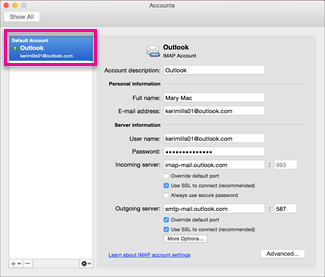
- #Does outlook for mac 2011 have journal function full#
- #Does outlook for mac 2011 have journal function pro#
- #Does outlook for mac 2011 have journal function mac#
Related: Value-based formularies take hold “The transparent PBM model tweaks the full-service model by removing spread between the amount paid by the purchaser for brand-name products and the amount paid to the pharmacy. The PBM’s spread profit is redistributed to other areas so that all services are still offered. This is not a PBA,” he says. Stern says there is not a lot of differentiation between a full-service PBM and a transparent one. Stern elieves that insurers that offer Medicare plans and/or exchange plans are more cost sensitive than others, and might more readily consider a PBA. NEXT: Which plans might more readily consider PBAs This is changing the dynamic of who has the information, making it easier for insurers to benchmark PBM costs and determine if bringing benefit management in is a better option, says Stern.
#Does outlook for mac 2011 have journal function mac#
This involvement has led to online access to MAC lists and other relevant information.
#Does outlook for mac 2011 have journal function full#
“The government wants full transparency-what’s paid, what’s retained, how much are rebates, what is the MAC list for generics,” Stern says.

Related: The new patient-centered pharmacy The result has been more emphasis on transparent PBMs than on PBAs however, he says, some insurers who want total transparency-including MAC lists for generics-are bringing the PBM function in house.
#Does outlook for mac 2011 have journal function pro#
SternCraig Stern, PharmD, president, Pro Pharma Pharmaceutical Consultants, Canoga Park, California, says that the demand for transparency in managing pharmacy benefits-supported by the federal government-has prompted many plans to demand information about PBM spread and other financial aspects associated with the benefit. “If a plan works with a PBM for retail, mail and specialty distribution and accepts formulary exclusions and the positive impact those exclusions have on rebate yields that creates a very compelling financial situation for payers.”Īlthough plans need the market share, expertise and bandwidth to even consider attempting a shift to in-house pharmacy benefit management, the desire for more control and transparency could push their hands. "The rise of specialty pharmacy has also given the PBMs another opportunity to generate significant revenue,” McHugh says.

Over the last few years, however, he says the major PBMs have dramatically improved pricing due to industry consolidation and formulary exclusions, and several PBMs (CVS Health and Envision) are owned by retail pharmacies. “If you go back seven to eight years, plans could see an immediate return on investment from managing rebates internally and managing their own retail pharmacy networks and MAC list,” says Will McHugh, vice president, Solid Benefit Guidance, Montvale, New Jersey. Typically, PBA services are provided by leading PBMs. PBAs handle administrative services for the client, such as claims processing and data reporting, while other tasks, such as formulary management, rebating, contracting with network pharmacies, and MAC list management, may be managed by the client. PBAĪlthough the concept of a pharmacy benefits administrator (PBA) has been on the healthcare radar for years, it has not yet hit the big time. PBMs, however, are not without detractors who claim PBMs lack transparency in announcing their spread between what clients pay and what managers negotiate with pharmacies, along with maximum allowable costs (MAC) lists that fluctuate at will. Pharmacy benefits managers (PBMs) have had success in reducing drug costs for their clients-health plans and self-insured employers-overseeing the entire drug benefit, negotiating manufacturer discounts and creating pharmacy networks. Related: Four ways clinical pharmacists can improve managed care

As the healthcare industry reinvents itself, it continually develops a variety of patient-centric, value-based, delivery and payment models-some with staying power and others tested and forgotten.


 0 kommentar(er)
0 kommentar(er)
